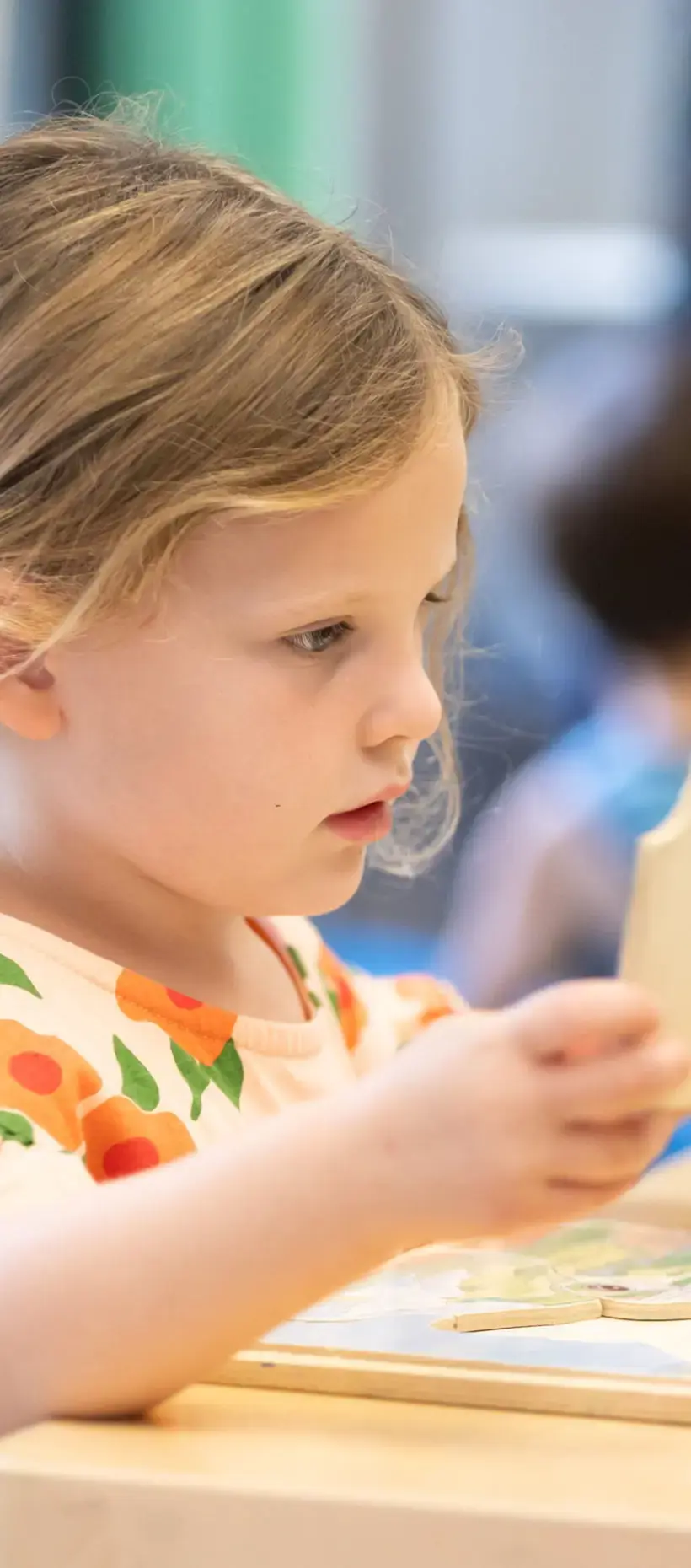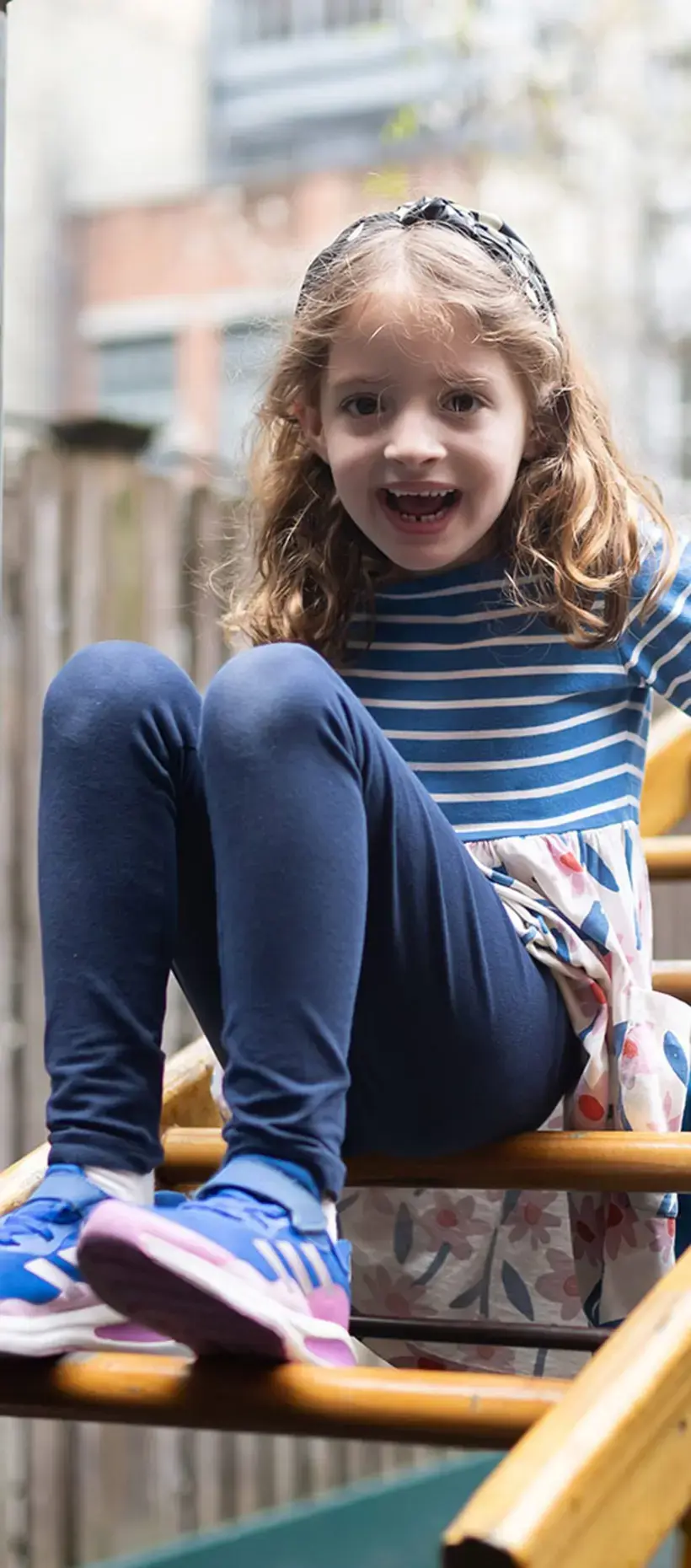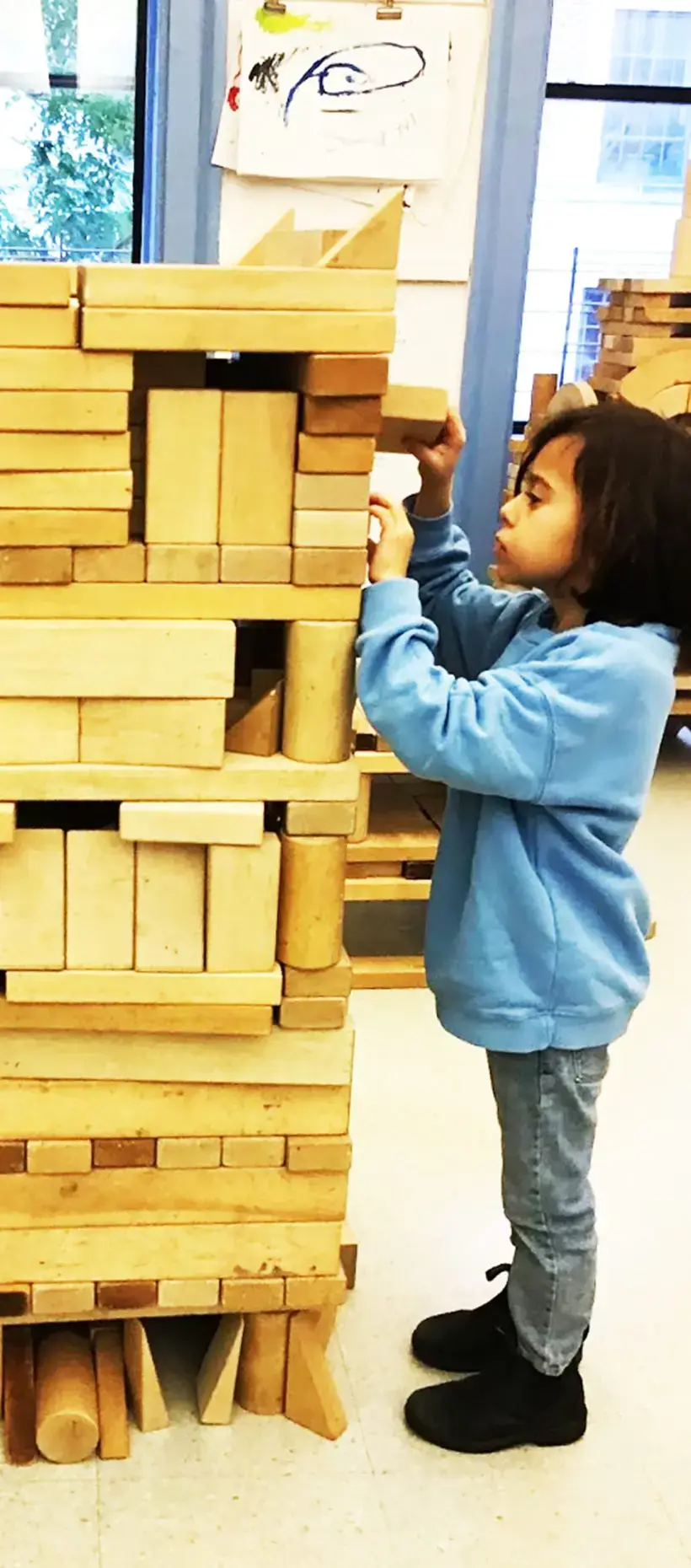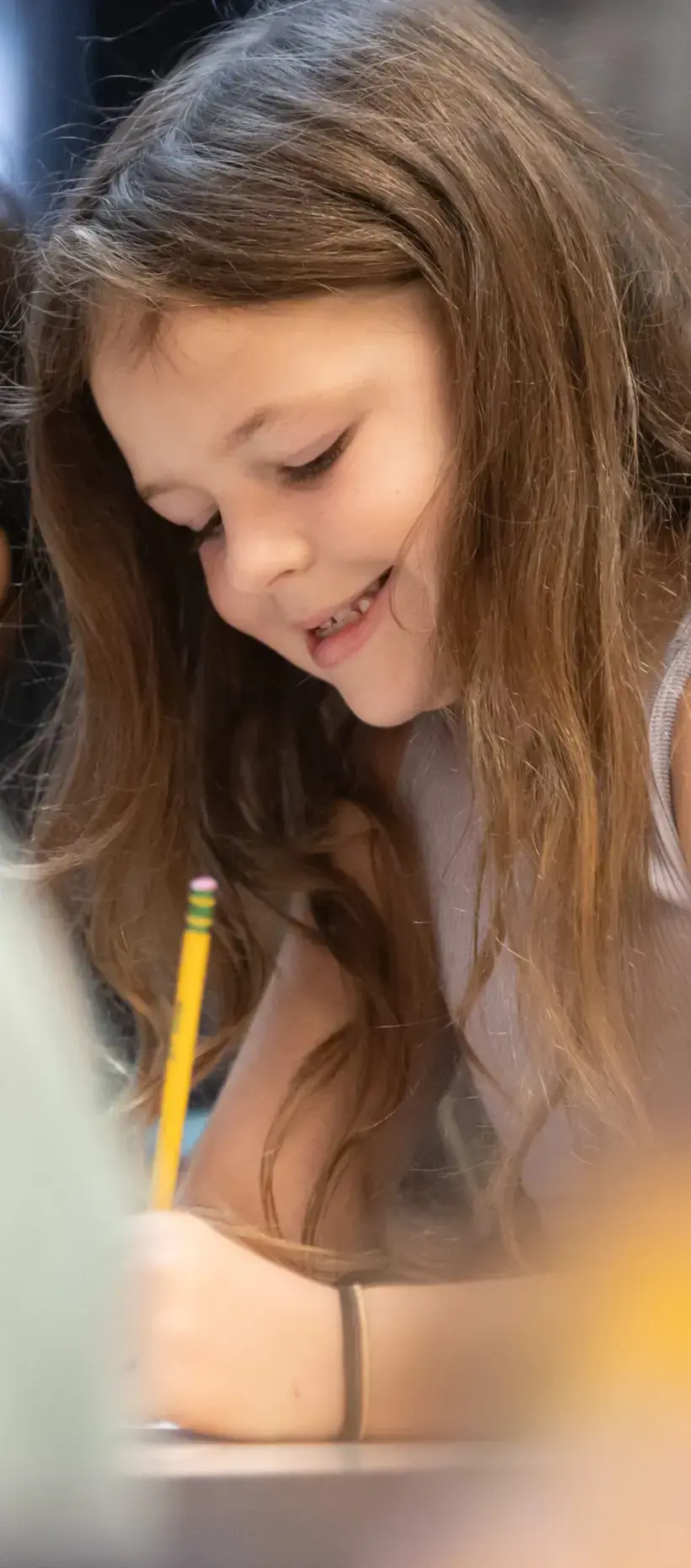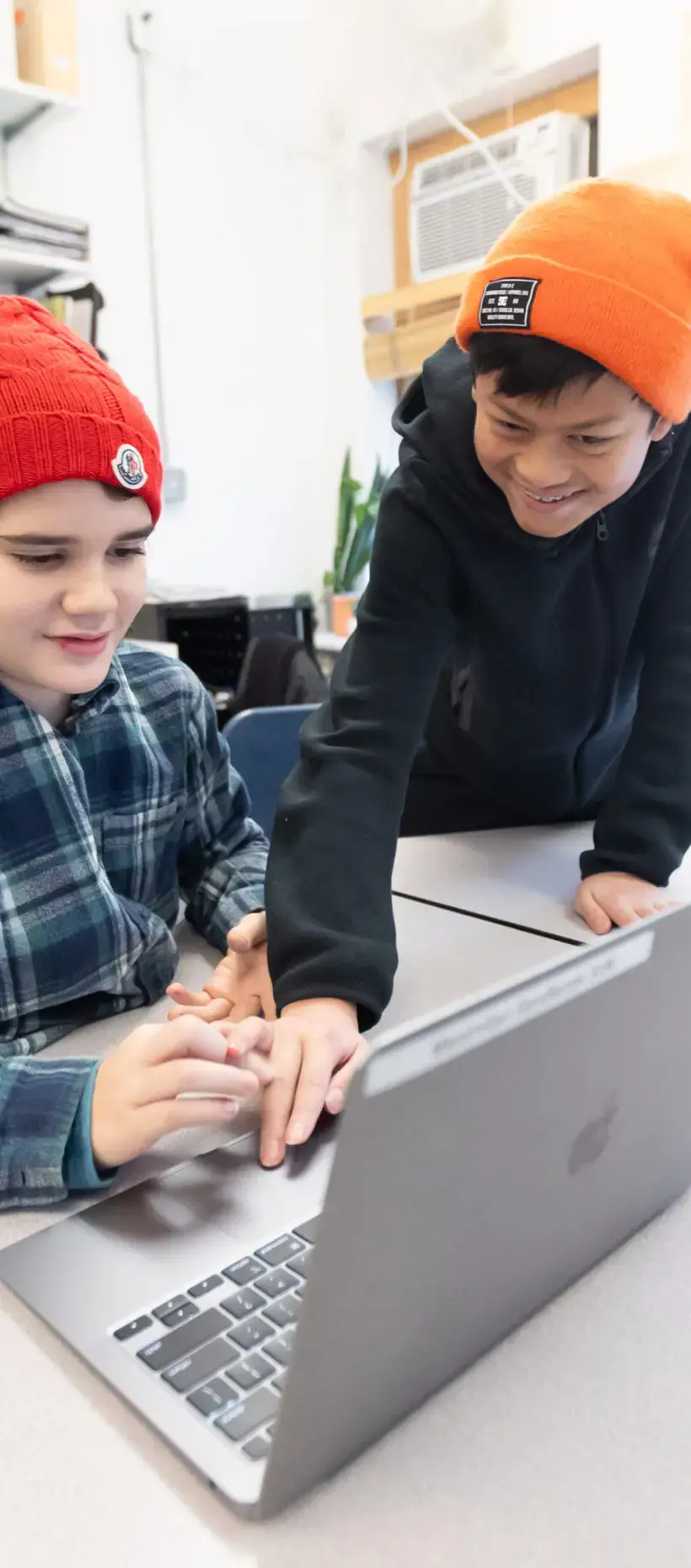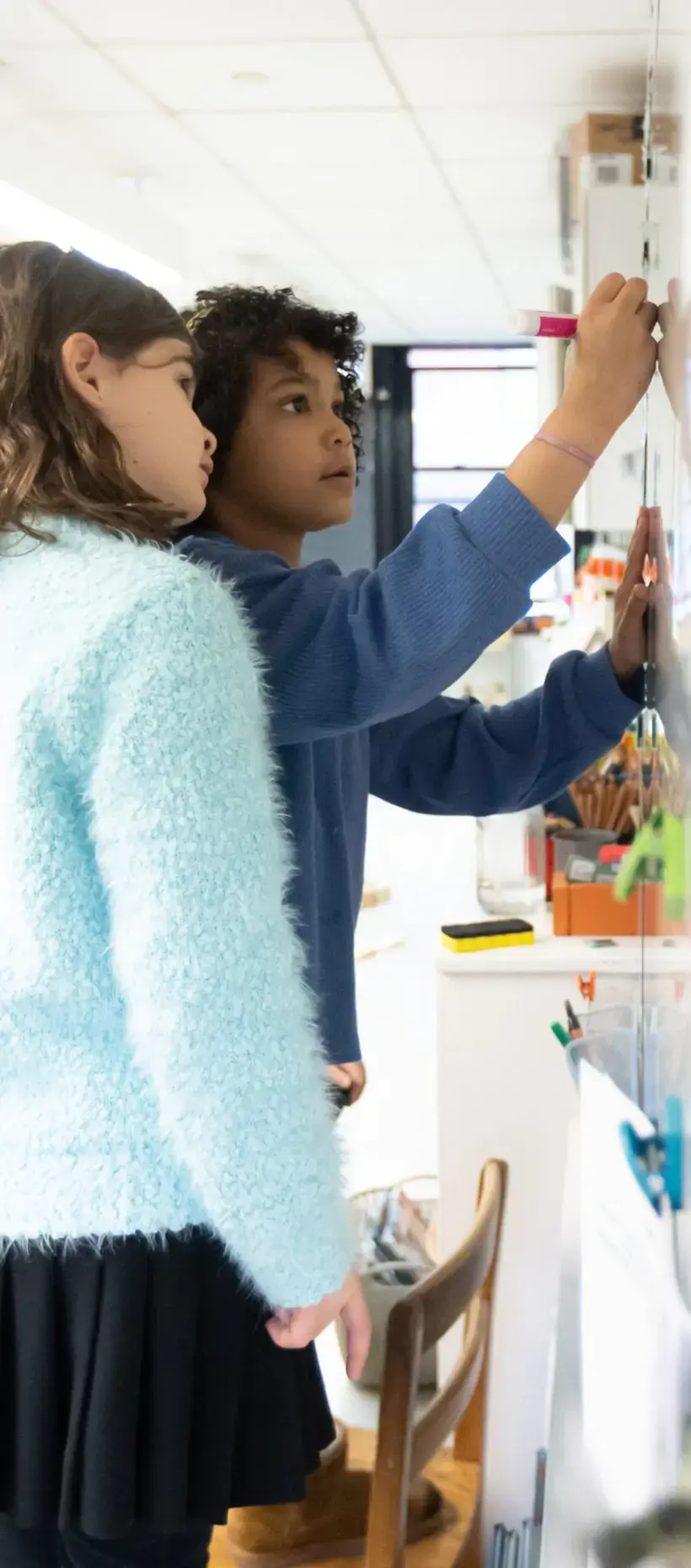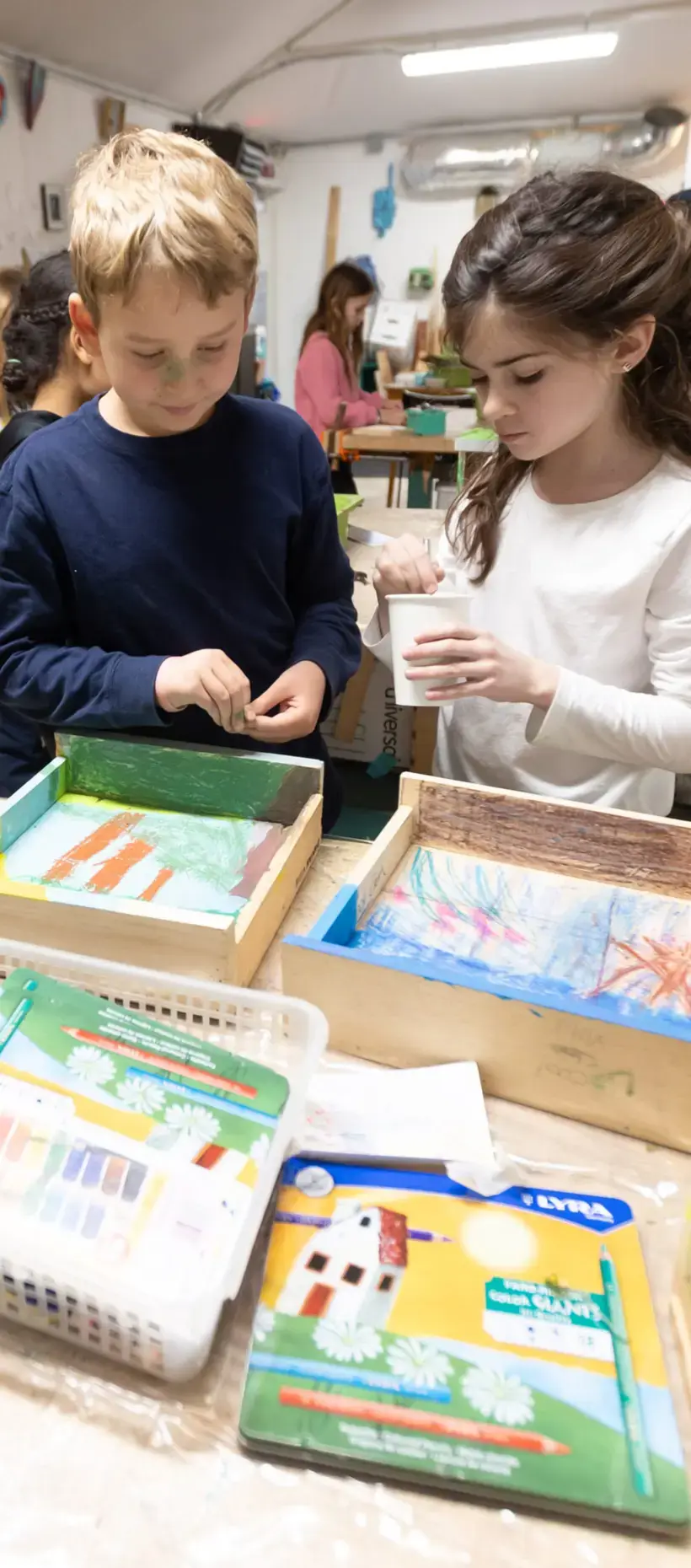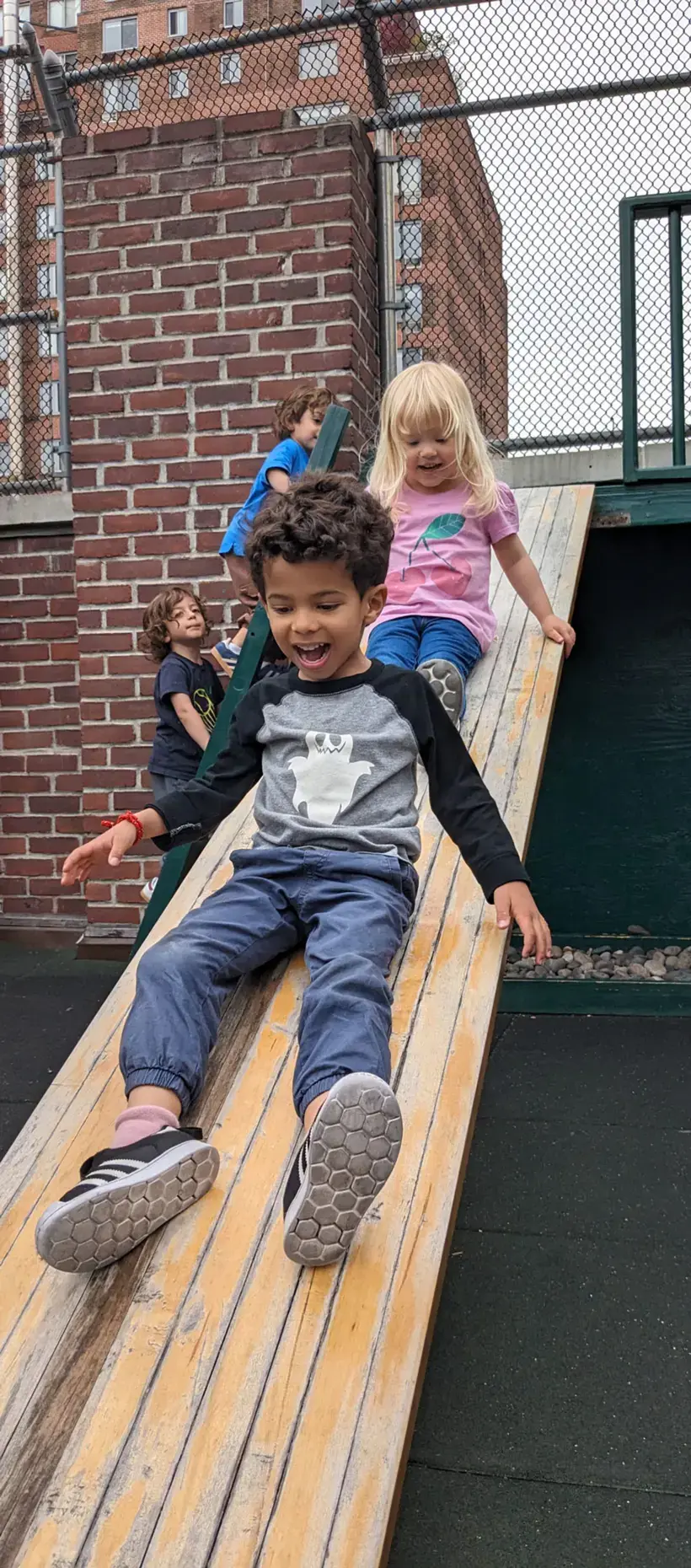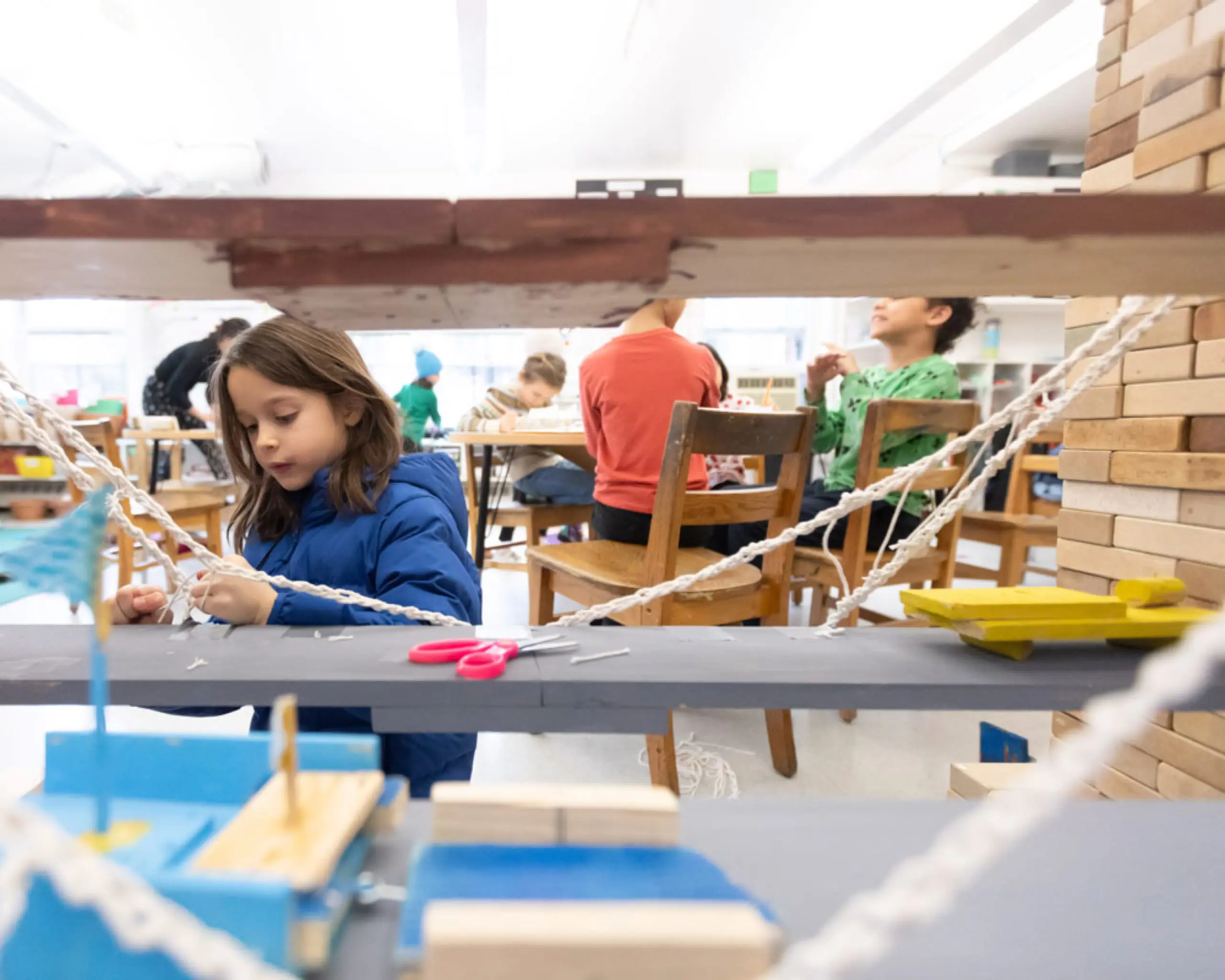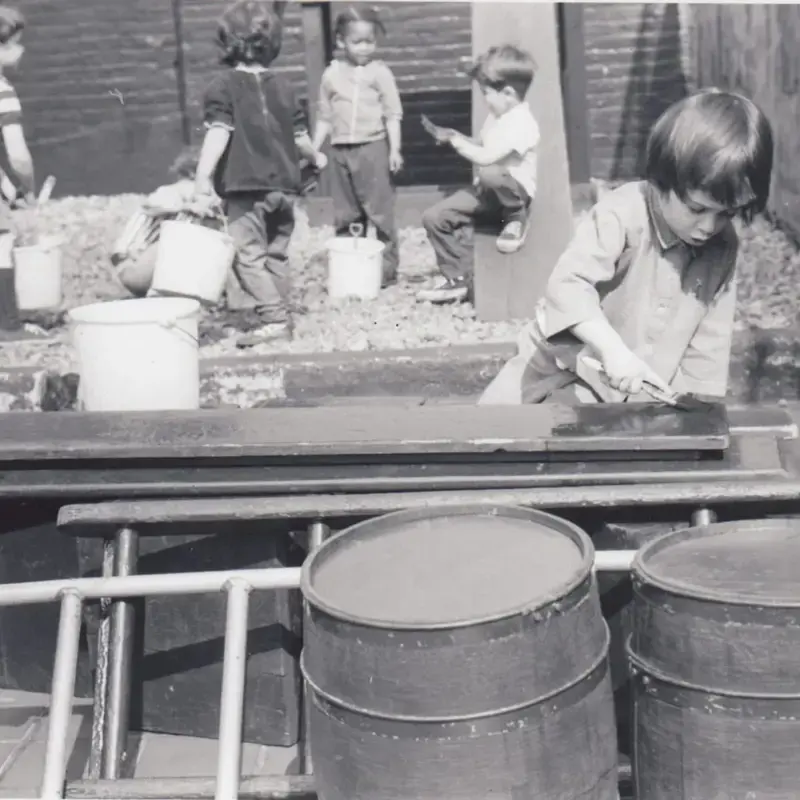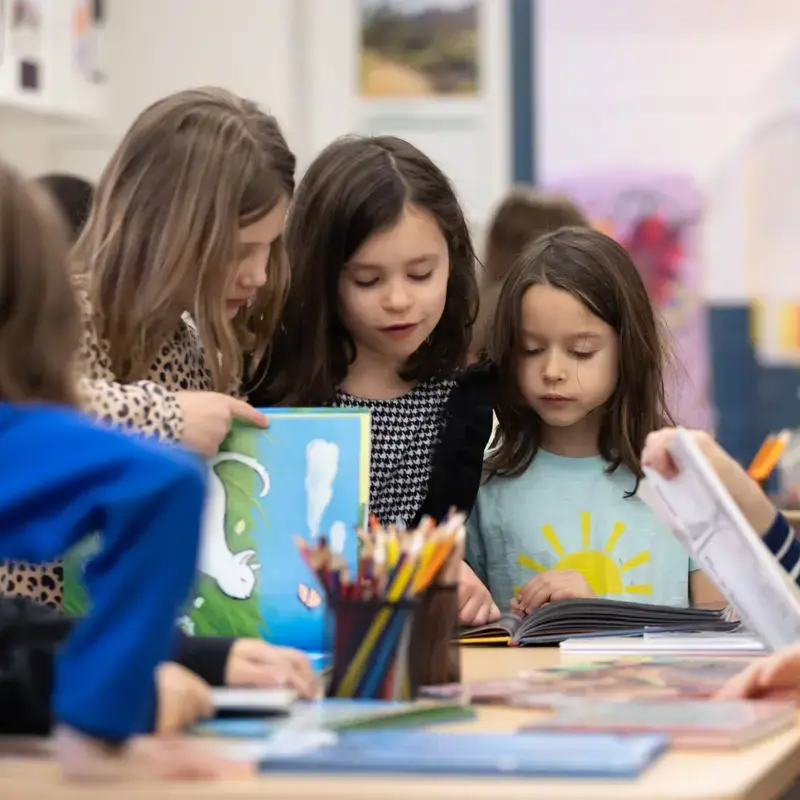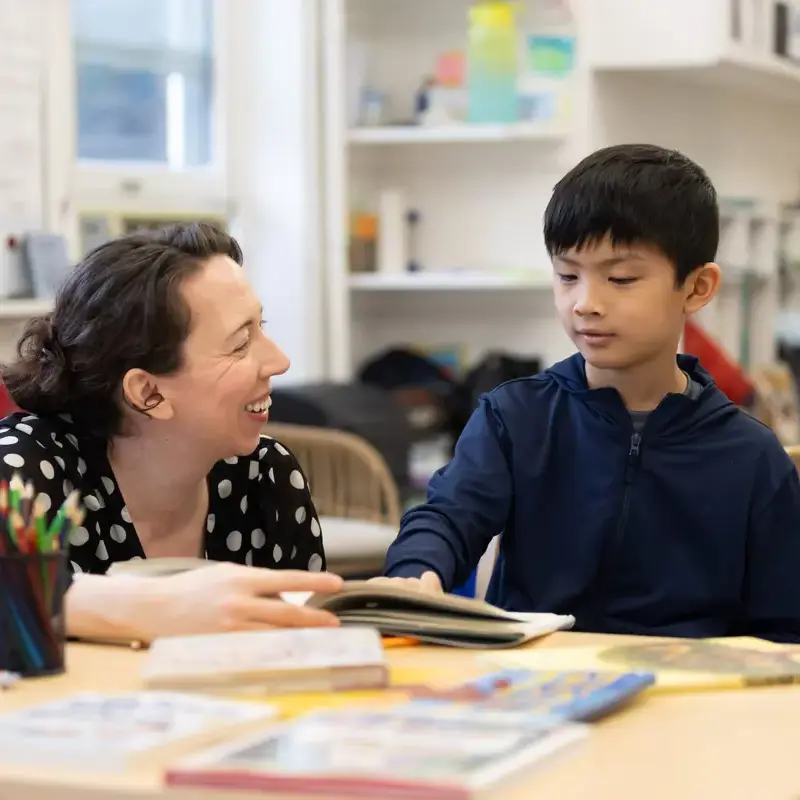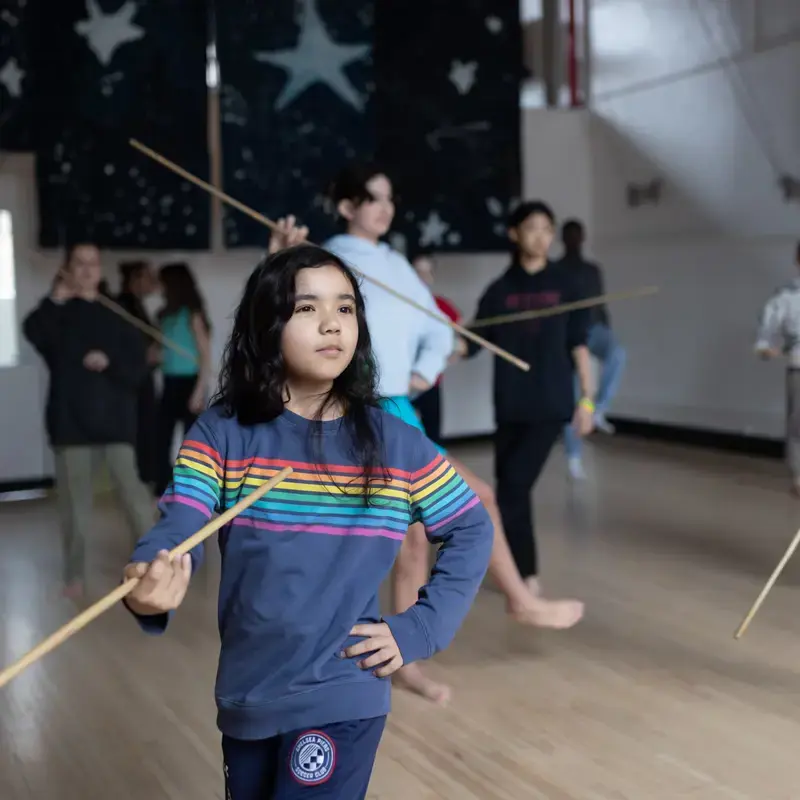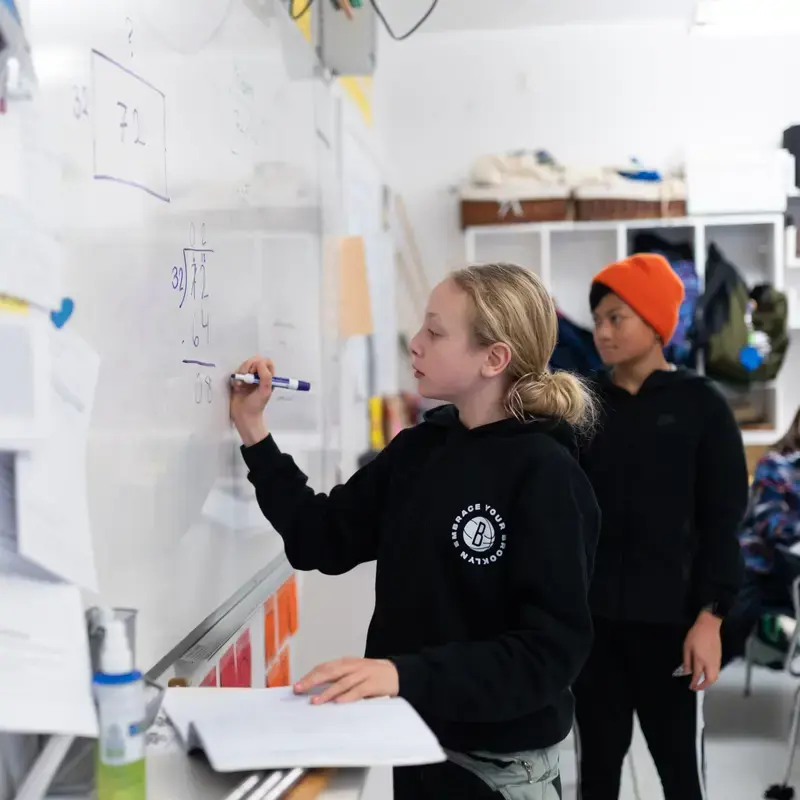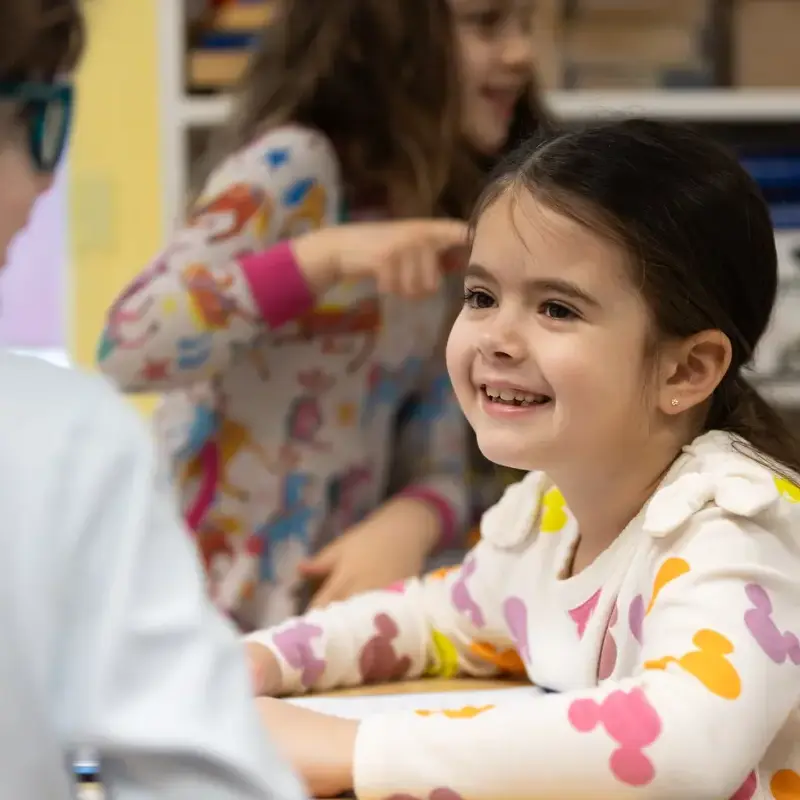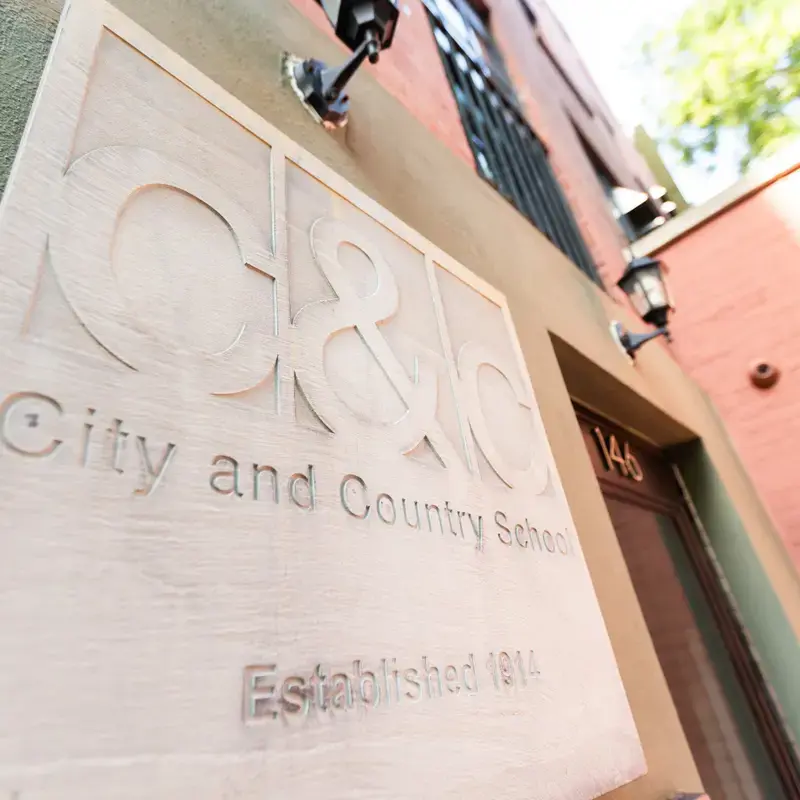Bridging More Than Blocks
For many years, CandC’s VIIs (second graders) have reconstructed the Brooklyn Bridge using wooden unit blocks created by founder Caroline Pratt. The timing of this months-long endeavor aligns as seven-year-olds begin to connect their past and present.“The Brooklyn Bridge quite literally bridges the ‘here and now’ with the ‘here and long ago,’” said VIIsR Group Teacher Adam Aharoni. “It represents the cognitive leap VIIs are making at this point in their development.” Notably, the building of the Bridge is not a unit unto itself. With teacher guidance, it flows from them out of the harbor as it is today. While the physical manifestation is a massive and elaborate Bridge, the study is long and integrated. The conception of the construction process and the build require children to draw on a variety of skills, including math, art, engineering, and history.
Despite the similarities, no two experiences are the same. “Children always bring their ideas and expertise to this study,” said VIIsS Group Teacher Sam Miller. “This year, one VII came up with a coding system to map out the caissons and label each block type! Seeing this child feeling empowered to put his ideas into action and share them with others in the Group and beyond was beautiful.” Also new this year, the VIIs created a stitch using yarn and hole punchers on the side of Emily Robeling’s mural, along with finger-knitted jewelry for her. They also chose to finger-knit the cables. Once the Bridge is built, the VIIs proudly act as tour guides, telling others the history of the Bridge and showing them their completed block structure. One Friday in February, families were welcomed into the classroom. Other visitors included past teachers, siblings, visiting scholars, Buildings & Grounds Staff, and more. Grown-ups commented on how impressed they were by the process: the collaboration between the children, their building and woodworking expertise, the in-depth research and knowledge of the Bridge’s history, and how the VIIs took ownership of the study. Next, the Bridge needed to come down. The children gathered and discussed how to go about this process, another immersive project that requires collaboration, teamwork, planning, data gathering, and math. “The VIIs realized that taking down the Great Bridge is an important job, equal to, but different from, building the bridge,” said Sam. When asked: “What do you think the purpose is of taking down the bridge?” Some VIIs said, “We have to clear the floor for our next study after Spring Break,” and “We need to return all the blocks we borrowed!” They made a plan for counting blocks: A VII shared, “I think we should group the blocks by their shape: brickies, middlies, squaries, etc.” VIIs agreed that stacking by a certain number to skip count would be the best way to come to totals. Some VIIs said they should stack 10 high, and others said 5. VIIs realized that although it would be faster to skip count by 10, the blocks might topple over if stacked ten at a time. VIIs are now collecting their data on Post-it notes and recording it on a large bar graph in the room. The students hope to have everything back in place and the total number of blocks used before spring break. And, just like that, the VIIs’ last big build will be complete. |
